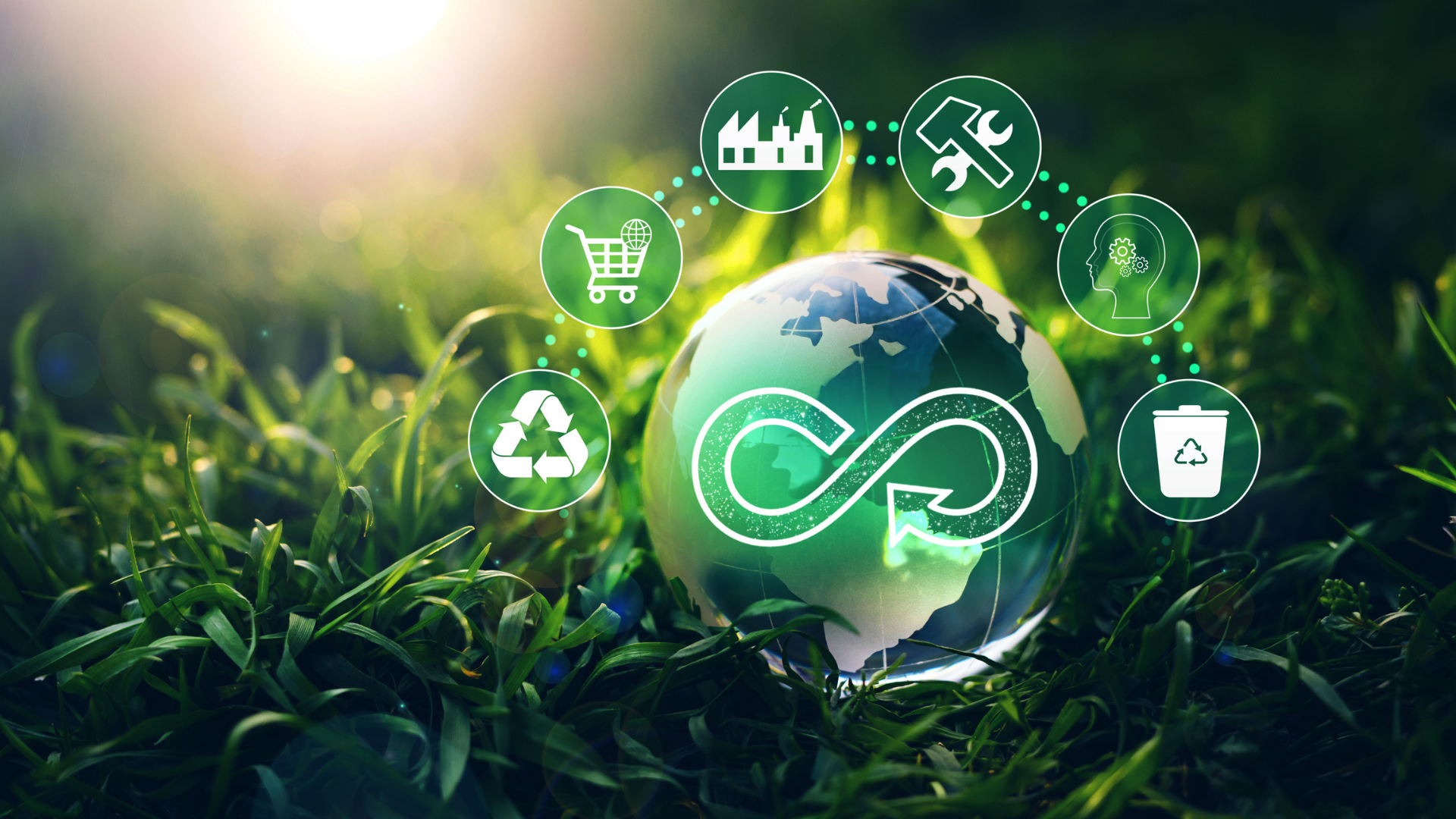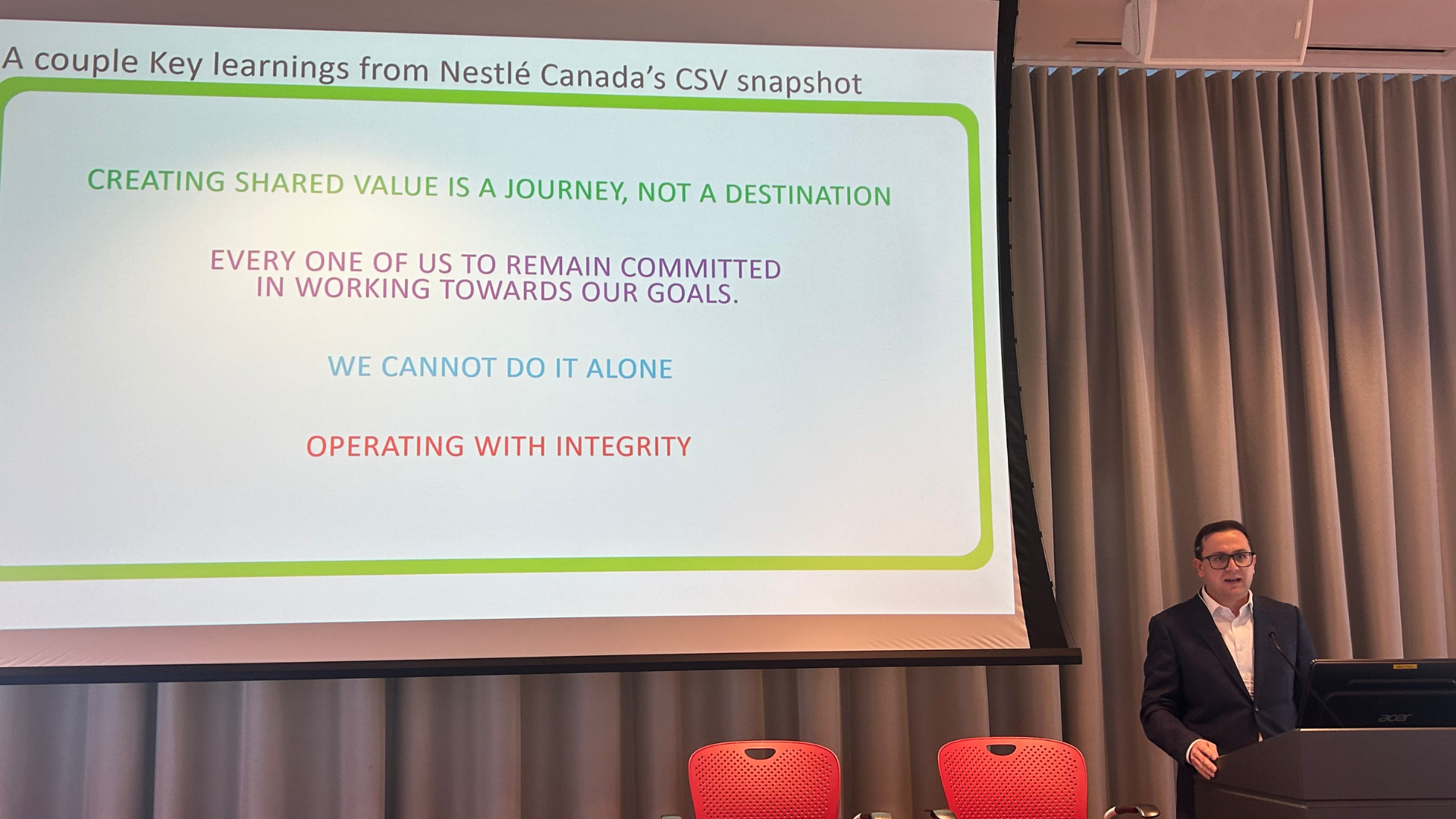MARKETING RESEARCH STRATEGIC PLAN | RESEARCH AND SCHOLARSHIP
One Industry’s Waste is Another’s Green Product
March 1, 2023 ·
Contributed by: Izabela Shubair, DeGroote Contributor
Share


As you rip open the bag of baby carrots and pull the plastic tab that opens your hummus, you may not give much thought to the packaging — or what happens to it after you finish your snack. But with Canadians annually throwing away 3 million tonnes of plastic waste, of which only nine per cent is recycled, sustainable packaging is now considered a key to reducing our environmental footprint.
In addition, the United Nations Food and Agriculture Organization (FAO) estimates nearly one-third of all the food produced in the world goes to waste. Food waste happens at each of its physical life cycle stage, including farms, manufacturing and processing, distribution, retailing and households.
For DeGroote School of Business marketing professor Devashish Pujari, sustainable packaging goes well beyond getting rid of single-use plastics. Part of an interdisciplinary research team, Pujari is currently investigating how companies can move to a circular economy model, in which nothing goes to waste.
“When one industry’s waste product can become input or raw materials for other industries, that is what the circular economy is about,” explains Pujari.
He, his co-investigators and scientists are examining how they can turn food waste in food processing industries as well as recycled plastics into bio-based packaging for commercialization.
“So, as we improve capture of these renewable options, nothing will go to the landfill, and we will reduce our dependence on fossil fuels or petroleum-based products.”
The Changing World of Sustainability Research
Pujari, who has worked in this area of research — with a focus on sustainable product and packaging innovation — for almost 25 years, says there have already been numerous strides made. For instance, climate change; net zero; and environmental, social, and governance (ESG) priorities are becoming top priorities for governments and the public.
“Public perception has shifted a lot and governments, companies, and organizations can’t ignore how much of a concern plastic packaging is to the world,” he says. “Canada, for example, hopes to get to zero plastic waste by 2030.”
His current work is part of a larger team effort, made up of researchers from the University of Guelph and Western University. The team, led by Guelph professor Manjusri Misra, is working to develop and commercialize a new and innovative bio-based packaging from industrial food waste and recyclable plastics.
“So, if this project is successful and new bio-based packaging is commercially successful, it will go some way to have an impact on this goal. As the new bio-based packaging uses industrial food waste and recycled plastics, it will have a positive impact on two industries; and it can also save food waste as it will prevent leaking and spoilage of foods as well as through extended shelf-life.”
Another important shift in sustainability research is an increasing focus on the collaborative approach, he notes.
“There is a need for, and a benefit to people from different disciplines to tackle these grand challenges together,” he says. “I don’t do research and development (R&D) in the lab but I learn from the scientists who do, and that can inform how I contribute when it comes to issues of market acceptance and industry adoption.”
From sustainability research to commercial application
If the innovative packaging ideas are commercially viable, Ontario’s economic competitiveness and productivity also stand to get a boost. Commercialization will create sustainable local jobs in the agri-food, packaging and manufacturing sectors along the value chain — while advancing the province towards a circular economy.
Pujari’s expertise in assessing the benefits and costs associated with these environmentally friendly products is integral to the project. He is identifying the challenges companies face as they consider or attempt to change their processes, R&D capabilities or supplier relationships.
Simultaneously, Pujari is studying how companies are changing their model to not only avoid food waste but also to address the waste in a more circular way.
“A lot of times, companies say there is a gap between attitude and behaviour from consumers,” he says. “For example, companies tell us that customers say they are ready to pay more for a green product. But if the processes to create the green product result in customers having to pay 15 per cent more, the companies aren’t sure customers will actually pay even one per cent more, especially in highly competitive and price-sensitive packaged foods industry.”
Concerns about a return on the investment in green products make companies hesitant to fully invest in marketing the products to their consumers, Pujari says.
To gain further insights from the customer side, Pujari and his team will study customers this year, exploring whether consumers would be more motivated to pay for green products if they understand where the raw materials come from and where the product ends up at the end of its life.
“We are filling landfills with so much plastic, recycling rates for plastic are very low, and recycling plastic is an expensive process,” says Pujari.
“That’s why sustainable packaging is hugely important to the circular economy concept, where nothing is wasted, and we keep plastics out of landfills.”
“To be successful, adoption has to happen for consumers. But it also has to be marketed and communicated by companies in a much more persuasive manner because companies can attract customers and develop markets. Companies change people’s minds all the time.”
The project is funded by the Ontario Ministry of Colleges and Universities (MCU), through the Ontario Research Fund – Research Excellence (ORF-RE) project #ORF-RE09-078 and supported by private sector partners.















